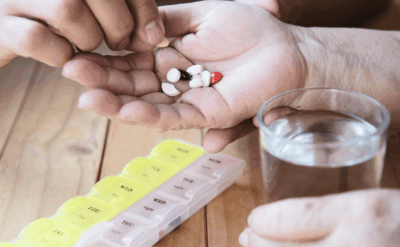Sustaviron: What It Is and When It’s Prescribed
Testosterone affects many aspects of men’s health. Low testosterone leads to persistent fatigue, reduced sexual desire, loss of muscle mass, and changes in mood. Medical evaluation identifies patients with clinically significant deficiencies. One treatment option that physicians prescribe is the Sustaviron testosterone injection. This therapy aims to restore testosterone levels while limiting the need for frequent dosing.
What is Sustaviron?
Sustaviron is a prescription testosterone product indicated for men with insufficient endogenous testosterone production. The formulation combines several esters of testosterone to provide both rapid and sustained hormone release after a single dose. Administration by intramuscular injection allows the compound to enter the bloodstream directly.
Composition and Delivery
The product includes testosterone propionate, testosterone phenylpropionate, testosterone isocaproate, and testosterone decanoate. Each ester has a distinct absorption profile. After injection, these esters dissolve in tissue and are gradually released into circulation. Enzymatic conversion yields active testosterone that interacts with androgen receptors in muscle, bone, and the central nervous system. The combined effect produces a steadier hormone exposure compared with single short-acting formulations.
Sustaviron Uses and Side Effects
Understanding Sustaviron uses and side effects is important before starting treatment. The medication can relieve symptoms of deficiency, but it also carries risks that require monitoring by a healthcare provider.
Therapeutic benefits
- Support for muscle maintenance and improved strength through enhanced protein synthesis.
- Improvement in sexual desire and function, including better erectile response.
- Reduction in fatigue with gains in daily energy and activity tolerance.
- Enhancement in mood and cognitive focus for patients with deficiency-related depression.
- Preservation of bone density reduces long-term fracture risk.
Potential adverse effects
- Acne and increased skin oiliness.
- Fluid retention can worsen heart failure in vulnerable patients.
- Elevated hematocrit, a factor that increases the risk of thrombosis.
- Mood changes such as irritability or agitation.
- Injection site pain, swelling, or local irritation.
- Worsening of sleep apnea symptoms.
- Benign prostate enlargement that may affect urinary flow.
- Altered cholesterol values and liver enzyme changes in some patients.
Regular assessment and laboratory testing reduce the chance that side effects will go unnoticed.
How Sustaviron Works
The multi-ester design provides a rapid rise in circulating testosterone followed by sustained levels over several weeks. Each ester dissolves at its own rate. Enzymes remove ester groups, liberating active testosterone. The liberated hormone binds to androgen receptors and produces physiologic effects in target tissues. The intramuscular route avoids first-pass liver metabolism and enables predictable release.
Pharmacologic considerations
Dosing intervals are longer than with daily oral agents. Clinicians select dose and frequency based on baseline lab results, clinical symptoms, and the treatment response observed during follow-up visits.
Who Should Not Use Sustaviron
Sustaviron is not appropriate for all men. Contraindications include active prostate cancer, male breast cancer, severe hepatic impairment, and uncontrolled heart failure. A history of thrombotic events raises concern for increased clot risk during therapy. A known allergy to any component of the product excludes its use. Women who are pregnant or breastfeeding should avoid exposure to testosterone because of the risk to fetal or neonatal development.
Cautions for specific patients
Older men and ones with existing cardiovascular disease require closer monitoring. Shared decision-making helps weigh potential benefits against individualized risks.
Dosage and Administration Guidelines
A clinician determines the correct dose for each patient. Injections are commonly given every two to three weeks. Many patients receive injections in a clinic setting, but trained patients may self-inject after instruction. Patients must follow prescribed dosing and should not alter frequency or amount without medical approval.
Monitoring during treatment
- Periodic measurement of serum testosterone to confirm therapeutic range.
- Complete blood count to monitor hematocrit and detect polycythemia.
- Lipid panel to check for unfavorable changes in cholesterol.
- Prostate exam and prostate-specific antigen testing based on age and risk.
- Liver function testing when clinically indicated.
Combining therapy with regular exercise, a balanced diet, and adequate sleep supports treatment goals and reduces some risks.
Patient education and expectations
Patients starting Sustaviron should receive clear guidance about treatment goals and safety measures. Noticeable improvements in energy and mood may appear within two to four weeks. Changes in muscle mass and bone density usually require three to six months of consistent therapy along with resistance training and sufficient protein intake. Proper injection technique, storage, and disposal are essential for safety. Patients need to avoid smoking and maintain a healthy weight when possible. Report new chest pain, severe headaches, sudden vision changes, or unexplained leg swelling to your clinician promptly.
Clinical Indications
Clinicians prescribe Sustaviron for specific medical conditions that produce low testosterone.
Hypogonadism
Hypogonadism is caused by failure to produce adequate testosterone by the testes because of genetic factors, disease, injury, or central regulation defects. Sustaviron hypogonadism treatment helps reduce symptoms such as low energy, muscle loss, diminished libido, and depressed mood. Treatment should be based on consistent laboratory evidence of deficiency and clinical signs.
Hormone replacement therapy
Sustaviron HRT (hormone replacement therapy) can be considered for men with age-related decline in testosterone when evaluation supports therapy. The end goal is to restore testosterone levels to a physiological range and improve clinically significant symptoms.
Delayed puberty and gender-affirming care
In selected adolescent males with delayed puberty, short courses of testosterone can support pubertal progression under endocrine supervision. Transgender men commonly use testosterone to achieve masculinizing changes such as facial hair growth and voice deepening as part of gender-affirming care.
How to Obtain Sustaviron Safely
Patients should obtain prescription testosterone through licensed healthcare providers and pharmacies. Avoid unverified suppliers and online marketplaces that do not require a valid prescription. For patients in the United States, Etizolab.com operates as an online pharmaceutical store that dispenses medications with a prescription and complies with applicable regulations.
Legal and practical advice
Buy Sustaviron only with a valid prescription. Confirm the pharmacy license, read patient reviews, and maintain documentation of your prescription. Always store medication as directed and follow disposal recommendations for sharps and unused product.
Final Thoughts
Sustaviron is a multi-ester testosterone option that may benefit men with confirmed testosterone deficiency. Effective use requires accurate diagnosis, individualized dosing, and ongoing monitoring to manage risks. Discuss treatment options with a qualified clinician and follow prescribed monitoring plans. With careful supervision and appropriate lifestyle practices, Sustaviron can help restore hormonal balance.







